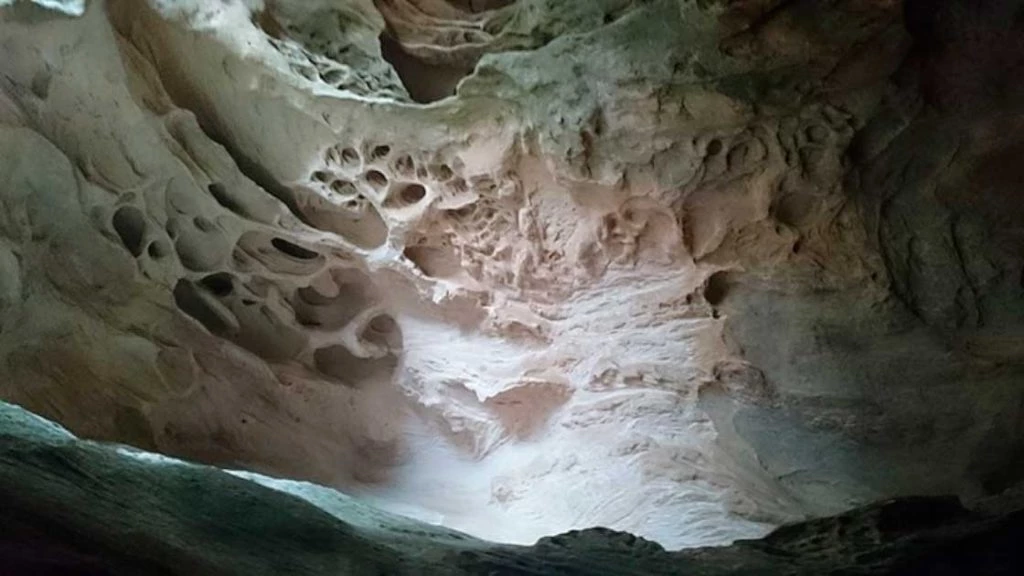Mankin, it seems, has always been naturally curious. A drive towards exploration has helped mankind discover many interesting insights about its roots, and understand the planet we live on. With the staggering growth in technological advancements, we have been successful in reaching other planets and science has pushed us to the brink of immortality.
However, the story of Agartha shows how we should also be looking for worlds that are beneath us. The most commonly accepted definition for the structure of earth follows the layered model, with the earth having layers of molten magma and the crust covering up the layers. We have also read of a metal core at a depth of planet, most likely made of iron and nickel.
On the other hand, many people believe that the earth is hollow and civilizations have been residing in kingdoms below us, isolated from the world above. The following post helps you unravel some truths about Agartha, the lost civilization living in “Hollow Earth”.
Who (or What) was Agartha?
The myths regarding Atlantean and Lemurian kingdoms have been picking the curiosity of numerous explorers and mystery enthusiasts worldwide. In addition, mythological references to worlds beneath us, such as Hades’s Underworld in Greek mythology or the concept of hell in Christianity.
Although associated frequently with esotericism and mythology, the concept of Agartha has played a critical role in fueling the popularity of the “Hollow Earth” theory. Agartha is described as a utopian city believed to be located in the Earth’s core, with its own sun-nourished civilization.
The concept of Agartha has been closely associated with Shamballa, a prominent highlight in Vajrayana Buddhism alongside Tibetian Kalachakra teachings. Shamballa, also known as Shambhala, is believed to be the seat of governance of Agartha. The existing assumptions about Agartha imply that the residents have superhuman intelligence and a better way of life as compared to their counterparts above land.
On the other hand, Hindu mythology suggests that Agartha is the lost land of the Aryavartas. These are said to be a supreme race of men and women who had to flee into the caverns and huge tunnels leading to their hidden kingdoms.
In addition, scriptures also point out that Agartha may be the residence of the Nagas, a race of powerful and magical half-human, half-serpent gods living at the lowest levels of the hollow earth, i.e., Patala. You could also discover a few analogies with Dante’s Inferno while exploring the illustrations about the depiction of Hollow Earth in Hindu scriptures.
Evidence for Existence of Agartha
One of the earliest concept for a Hollow Earth was brought forward by none other than Edmond Halley, the discoverer of Halley’s Comet. Halley proposed the theory in the 17th century, in which he stated that the Earth was made of multiple concentric shells isolated from each other through individual atmospheres.

In addition, Halley also proposed that natural events such as magnetic field variance and the Aurora Borealis (Northern Lights) happened due to the multiple layers moving independently from each other. Edmond Halley presented his theory in 1692 on the basis of magnetic field readings and his knowledge of the gravitational pull of sun and moon on earth.
People liked the idea, and the model of Hollow Earth presented by Edmond Halley was refined over the course of next few years. The theory of multiple layers of worlds separated by different atmospheres made way for a simpler view of Hollow Earth or Agartha as a single, large cavern. According to this theory, the Earth has another sun hanging in the center, nourishing a lush, habitable environment.
One of the most active proponents of the Hollow Earth after Edmond Halley was John Cleves Symmes, Jr., who declared that the earth was undoubtedly hollow. He also sought funds for an expedition to the North Pole, where he could find the aperture for accessing this Hollow Earth.
Symmes also succeeded in bringing Congress to vote on a proposal for funding his expedition. However, the idea for the expedition was turned down in the vote without dimming the enthusiasm of Symmes. He continued advocating the concept of Hollow Earth, delivering speeches, writing articles and conducting debates till his death.
Any Lost Tech Down There?
The mystery around a whole new world residing inside the earth is definitely the stuff you would find in Hollywood. Although many proponents have created different models, more or less similar to the one proposed by Symmes, no one has ever actually come in contact with the civilization in Agartha.
- Farini’s Great Discovery: Is there a Lost City of the Kalahari?
- What Happened to Aksum, the Fourth Great Empire of the Ancient World?
However, Admiral Richard E. Byrd of the US Navy, an explorer, had an interesting story that raised curiosity about the type of people living on this Hollow Earth. One of the entries in his diary, during his flight over the North Pole on one of his exploration trips to the arctic regions, cites possible evidence about Agartha and its people.
According to the diary entry of Admiral Byrd, he was intercepted by a saucer-shaped aircraft in mid-air. He stated that the people living in the center of the Earth had used advanced technology for piloting his aircraft mid-air and landing.

The diary of Admiral Byrd also states that he was greeted by emissaries of the mysterious land of Agartha. However, serious doubt has been cast on these entries in the diary of Admiral Byrd, and he may indeed have never made it to the North Pole in his explorations.
Irrespective of the credibility of the writings by Admiral Byrd, it is important to note the similarities between his account and the description of ancient civilizations of Atlantis and Lemuria. Even today, you can find evidence of fish skeletons and fossilized reefs in the arid regions north of the Himalayas, where it is believed that Shamballa or Shangri-La lies.
Before the cataclysmic events that made the world as it is today, it was said that the people who resided above found ways to safeguard their knowledge and civilization from oncoming disasters. Here they felt protected from the floods and cataclysms which they feared would cover the Earth.
While there could be no evidence for truth behind the existence of civilizations more advanced than us beneath the surface, the stories offer some capsules for thought. Could it be possible that we have an actual hidden kingdom, thriving beneath our world?
Do they have any involvement in our world? What will we do when we discover their existence and the knowledge they have hidden from the world? The quest for truth could one day remove the shrouds of mystery over the possibilities of a Hollow Earth.
Top Image: Many believed that a hidden kingdom called Agartha existed inside our planet, and some even claimed to have made contact. Source: C Durand Chapman / Public Domain.
By Bipin Dimri